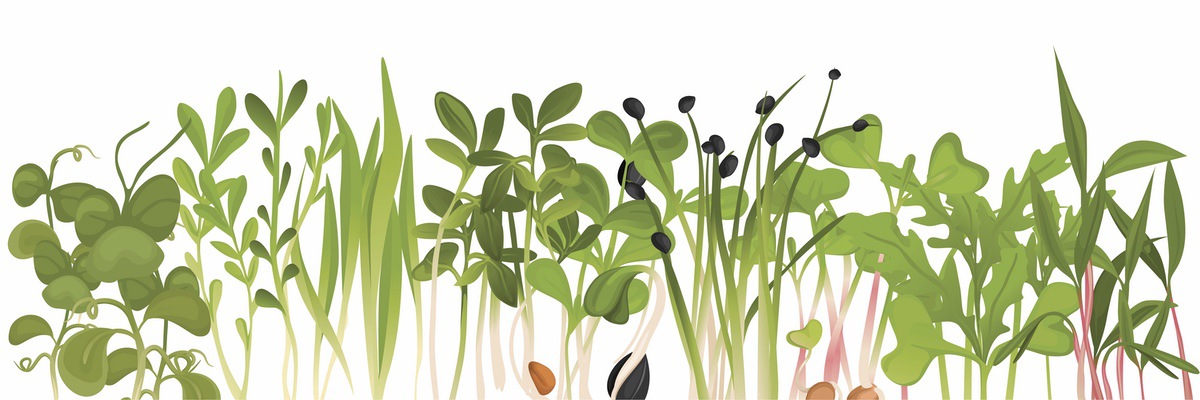One of the foods in the news lately is microgreens, as this February headline notes: “Microgreens: Superfoods for the future, packed with nutrients and easy to grow.” Since 2023, research studies on microgreens have risen sharply with more than 103 articles on microgreens published in PubMed, the national medical database. You may have heard of them, but wondered what they are and why you might want to add them to your diet.
Let’s start with some definitions
Microgreens, also known as shoots, are baby plants harvested when they have grown for five to twenty-five days, depending on variety. They are ready to eat when they are only two to four inches tall. Growing in soil or a nutrient-rich substrate, they get much light which is needed for the photosynthesis that gives them their green color. Like mature plants they grow a central stalk and leaves.
Many people think that sprouts and microgreens are the same because they start with the same seeds. However, sprouts germinate in water and darkness, lack leaves, and only need light on the final day of growth to turn green. Because sprouts are grown in warm, humid conditions, they can be more prone to bacteria.
What’s so special about microgreens?
As opposed to mature plants, these early-developing plants are nutritional powerhouses, because they contain all the nutrients needed to grow into a mature plant. Most microgreens provide potassium, iron, zinc, magnesium, copper and antioxidants. Pea, radish and sunflower microgreens also contain amino acids, the building blocks of protein.
And despite the admirable amount of nutrients in mature plants, microgreens can offer even more. Consider broccoli. Broccoli microgreens have forty times more nutrients than mature broccoli. That translates into forty times the ability to fight inflammation, reduce oxidative stress and reduce insulin resistance. Broccoli microgreens also have 550 percent of the Recommended Daily Allowance of antioxidants, and high levels of Vitamins A, C, and K. As Teresa Johnson, long-time microgreens grower and researcher in sustainable agriculture noted, “Although broccoli was the first microgreen studied, new research is proving that all microgreens have comparable nutrient values.”
Hopes for medical research
With microgreen’s health benefits, considerable research is being done on the potential of incorporating those health benefits into medicines and treatments, although at this point supplements are much more expensive and often not as effective as simply enjoying eating whole microgreens. However, research is evolving to develop the potential of these new superfoods to treat many of the chronic illnesses Americans face.
How can you add microgreens to your meals?
You can find microgreens at some grocery chains (Fresh Thyme, The Food Coop, Whole Foods) and health food stores. Although the Huntley farmer’s market no longer has a microgreen supplier onsite, they are available at the Woodstock farmers’ market. Local microgreen subscription services are also available through naturegarnishmicrogreens.com in Huntley and Purewateraquaponics.com in Marengo. Growers typically deliver within a 20-25-mile radius to ensure freshness. Growing your own microgreens is also an option and there are many internet sites and books available with guidance.
There are many kinds of microgreens available such as arugula, broccoli, cabbage, pea, radish, and sunflower. Although all microgreens provide a nice crunch to a meal, each variety has its own flavor. You can add them to a variety of dishes, from smoothies to salads, soups to casseroles, sandwiches, and wraps.





